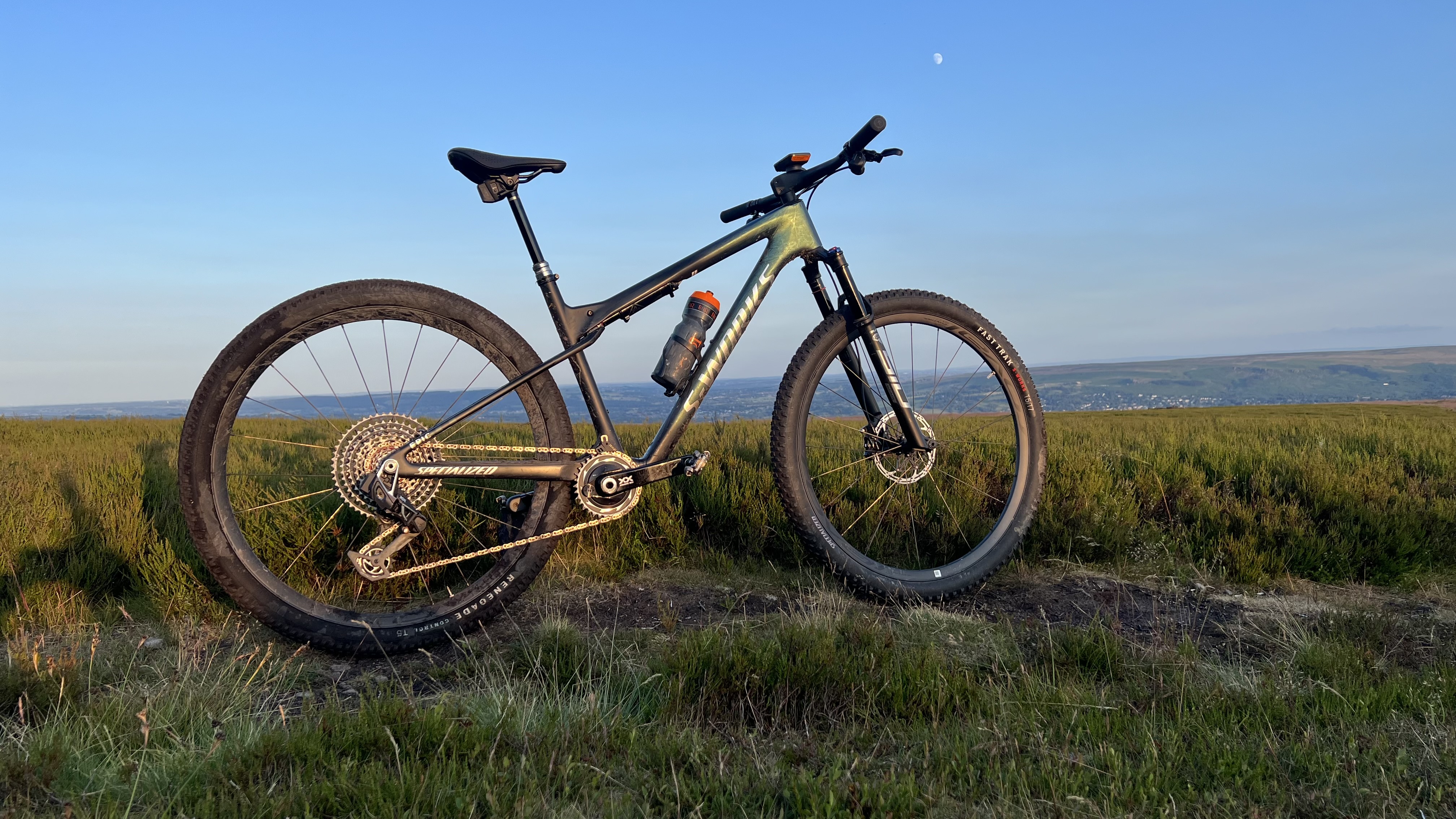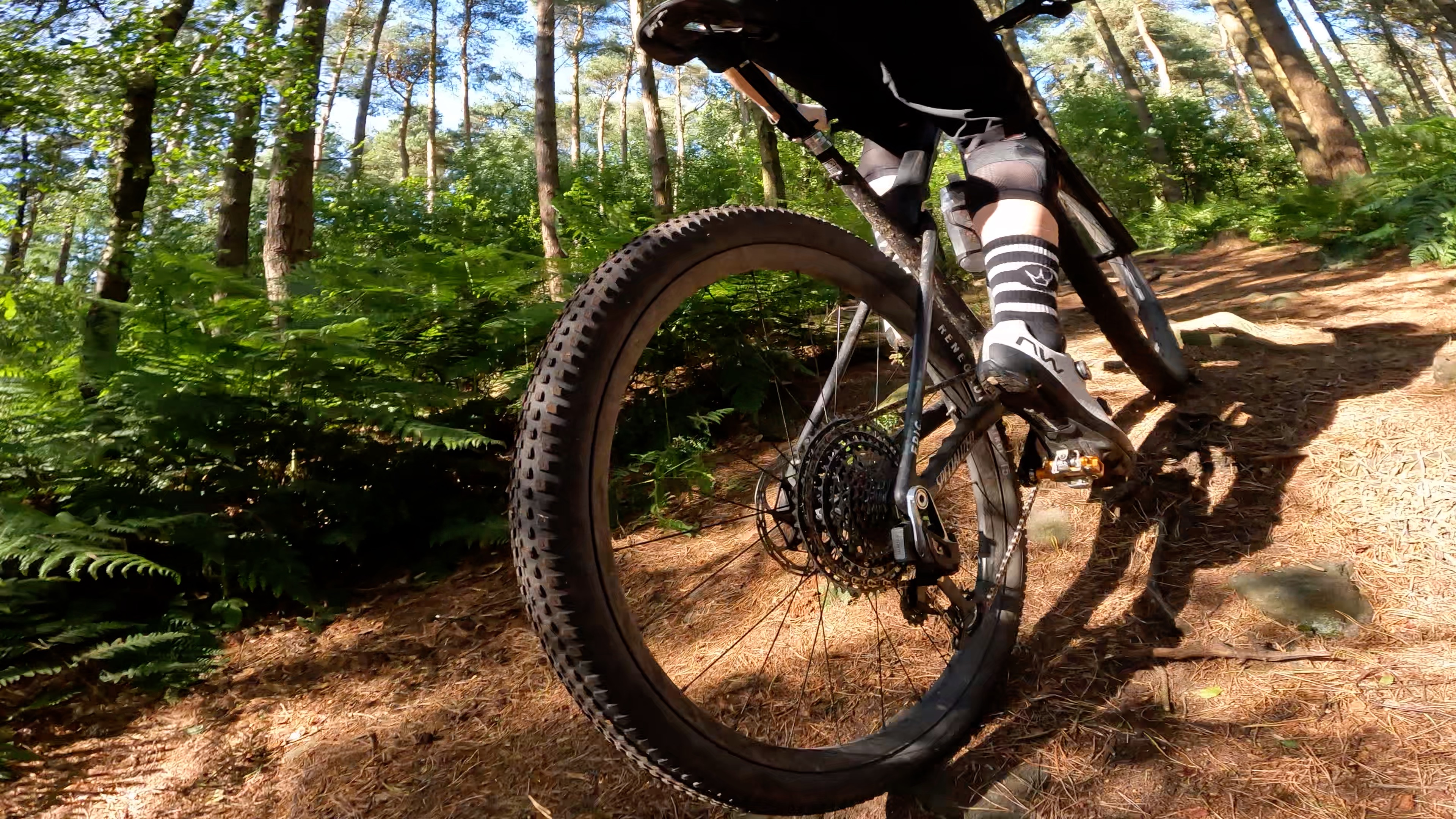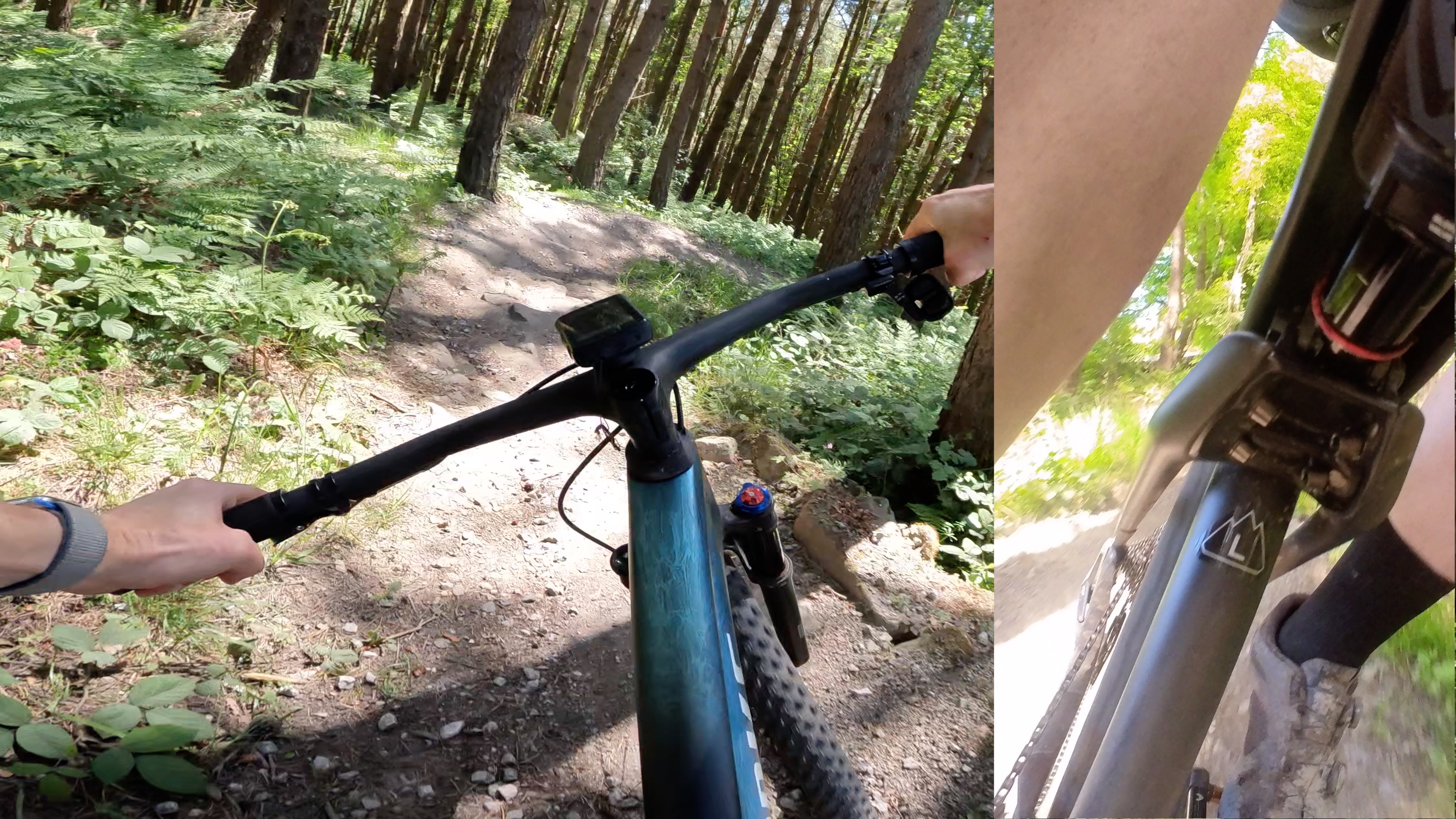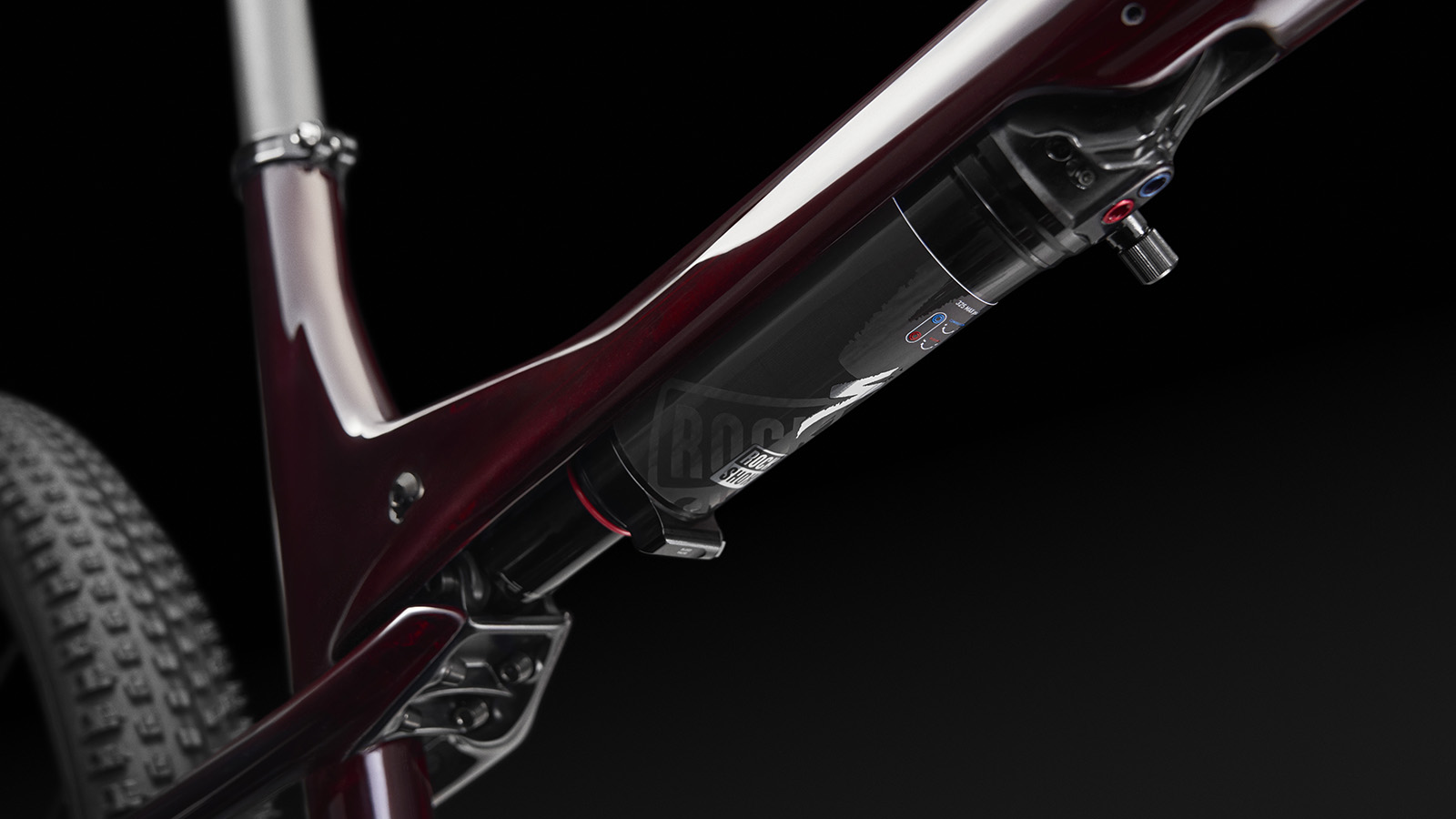Bespoken Word – pinning the tail on the donkey
Guy Kesteven has recently been having interesting, revealing, and perception-challenging chats with suspension specialists and bike designers. So what goes into creating the ride they want? And can perceptions of where performance comes from sometimes be completely wrong?

For the past two months, I’ve been locked into a fascinating deep dive on the new Specialized Epic World Cup XC race bike. A bike that seems like a defiantly, deliberately awkward, and possibly over-complicated way to target a segment so tiny I’m not even sure it exists. It uses a new frame with a new shock to create a 75mm travel, zero sag weapon that’s totally against the grain that everyone else is going with their race bikes, including Specialized’s own Epic Evo which has 35mm more rear travel but is 100g lighter in terms of frame weight and a $1000 lower price tag.
However, while it sounds like a non-starter on paper, it's a twisted firestarter when it comes to hardcore race raving. It was trying to analyze how Specialized have achieved that which turned this test into a real education.
Launch code
While it’s designed to be a “hardtail killer” in terms of rigid efficiency it’s also got a surprisingly supple suspension feel once everything starts moving. And it was trying to nail down exactly what the Anti Squat figure (essentially how much the suspension stiffens or not when you pedal) was that started me spiraling into a ride feel wormhole with back-to-back testing and an initially frustrating but ultimately fascinating, perception-flipping conversation with Specialized’s Ride Dynamics dept.
Anti Squat is generally perceived as such a key metric of suspension performance that putting it in your press release is as crucial as a teenager taking a fake ID out on a Friday night. It was conspicuously missing from the World Cup launch assets though. That’s because the media kit was mostly about the manual bleed button for the negative air chamber and the various ‘Zero Gulp, Half Gulp, Full Gulp’ options it lets you create. They were even keen to share 0, 4, and 10 percent sag stats, micro linkages, and stiffening glide rings in the unique RockShox SIDLuxWCID (Superlight Integrated Design Lux World Cup Integrated Design). Pro racer Chris Blevins even told us it was his new favorite bike and he’d never ride a hardtail again. Although conspicuously he’s not ridden this bike in a World Cup race either, preferring to stick to the Epic Evo instead.

Trial by mail
So I sent Specialized what I thought was a simple request for the anti-squat numbers, but rather than just getting a percentage answer it started a rally of back-and-forth emails Wimbledon centre court would have been proud of. Why did I want to know it? What did I think it was? How have you arrived at this conclusion? Frankly this was now starting to sound like Suspicialized had something to hide and made the whole situation even more intriguing.
So I went full send with the ‘workings out’ on the final reply mail:
“I’m not using any pivot point prediction software or fancy algorithm algebra, just the good old ‘Kesometer’ of having been riding Specialized FSR systems and everything else since they first appeared.
So far the way it still seems to take a little bit of the nose off the power stroke but doesn’t kick back much over roots/rocks in Half Gulp-Full Gulp settings means the ‘Kesometer’ needle is pointing to somewhere between new Levo SL and Stumpy and friends, but possibly closer to the latter.
Normally I’d just go - well it feels like this so that’s what I’m saying - but there’s potentially a fair amount of skewing to the normal 'Kesometer' settings here.
First it’s more supple than I expected for what sounded like a deliberately uptight/rigid race bike from the pre PR. So maybe it actually has more AS than the SL but it’s still not as much as I expected and the meter is misreading that way.
However, there’s a big difference in the weight of the two bikes so maybe the easier acceleration means less sag during the first phase of the power stroke than would be typical of this much AS on a heavier bike. So maybe the 'Kesometer' is misreading that way.
Or maybe it’s the effective seat angle created by the forward offset of the seat tube base that puts the saddle a relatively long way back at my height (745mm) and therefore leg mass movement has more effect on suspension movement than the steeply angled bikes I’ve been riding recently.
Plus I’ve now been on holiday for two weeks so the inevitable doubt is starting to creep in as I’m not fresh off the bike. You can be damn sure I’m digging it out of its hiding place and stamping on those pedals and cross-referencing to other bikes with known AS as soon as I’m home though.”

Unexpected results
At this point, Jason McDonald - the XC suspension expert in the Specialized Ride Dynamics team - was probably tempted to take out a restraining order, but thankfully he set up a Zoom call instead. And in some ways I was right. The Anti Squat was surprisingly low for a race bike - essentially the same as for the Epic Evo once you factored in the bigger chainring on the WC. However, that was actually lower than the Stumpjumper Evo which is higher than the new Levo SL (despite Specialized saying the reverse was true at the leccy bike launch). So I got that bit wrong.
What was fascinating though is how the way the shock behaves affects the perceived stiffness of the bike. Having hammered the bike hard against everything from gravel bikes to more conventional contemporary full sus bikes I would have bet my house on the frame being hyper stiff. Run in ‘Zero Gulp' or even 'Half Gulp’ the one-piece carbon cockpit and rigid post are a painful place to have your hands and hindquarters after half an hour. Steering stiffness feels more like a 35mm legged trail fork than a 32mm legged XC fork stretch to an extra 10mm of travel too. I’m ashamed to admit the fact Specialized said the frame sets “new standards in torsional rigidity (for steering precision and upper body power transfer) and BB stiffness (for pedal response and efficiency)” in the launch PR probably influenced me a bit as well.
But when I told Jason that he laughed and revealed that the rig-tested stiffness figures for the Epic World Cup, the Epic Evo, and the full Brain shock Epic are all very close. As a consolation, he told me that Chris Blevins had thought the same, but I was deeply, deeply shooketh at the news the ‘Kesometer’ was so far off target.
Getting deeper into the tech with Jason, the perception of seriously high stiffness seemingly comes from the fact the WCID shock uses the minimal sag air spring curve to counter initial movement rather than a compression damper where “you have to have motion to prevent motion”. The shock tapping against the top out on smoother sections keeps the rear end high and the already inverted stem nose down so you’re loading up the grippy front wheel in turns. The way it sits high and taut until triggered rather than floating fluidly around the sag point also makes the back end feel stiffer than it is. Add a sub-10kg weight for savagely fast acceleration and the shock-based rigidity deceit is complete.

Recalibrating the 'Kesometer'
So why am I admitting that my ‘Kesometer’ was so wrong in its interpretation of sensation into science? Because I think it’s crucial as a reviewer to be constantly questioning your assumptions and being open to having them challenged or even completely overturned by new information. Plus if you make a living calling out what you think are failures in the work of bike and component designers, it’d be pathetic - if not downright dishonest - not to put your hand up when you were wrong yourself.
It’s also - presuming Specialized are telling the truth here - irrefutable proof that suspension can have a dramatic effect on chassis feel and vice versa. Something I’ve always been very aware of and tried to factor into reviews and holistic bike assessments as equally - if not often more - important than the kinematic elements many people obsess over to the exclusion of the bigger picture.
Jason and I also had a super interesting, far-ranging chat about how geometry, ride height, pitch, and individual components can all have a dramatic transformative effect on the final feel of the bike. He also talked about the three-year prototyping process for the Epic World Cup which included riding and racing a WCID style shock on the existing Epic chassis to prove the basic concept. Happily, that chat also included us agreeing on perceptions and performances of several other bikes which restored my confidence in my ability to read the overall algorithm of a bike, which was a definite relief after the rigidity results reveal. The very fact that Specialized groups their frame and suspension engineers into a Ride Dynamics department so they work completely in sync rather than separating them also tells a story in itself. It also explains how Specialized has achieved something quite remarkable in terms of emotional engineering and psychological performance with the new Epic World Cup. So I’d better stop rambling on here and get that review written up as soon as possible.
But at least you already know that I’m not going to get - literally - hung up on the whole question of Anti Squat, because there’s way more to its short-track race-winning performance than pivot position and chain growth.

Guy Kesteven has been working on Bike Perfect since its launch in 2019. He started writing and testing for bike mags in 1996. Since then he’s written several million words about several thousand test bikes and a ridiculous amount of riding gear. He’s also penned a handful of bike-related books and he reviews MTBs over on YouTube.
Current rides: Cervelo ZFS-5, Specialized Chisel, custom Nicolai enduro tandem, Landescape/Swallow custom gravel tandem
Height: 180cm
Weight: 69kg
